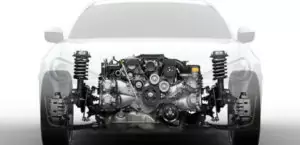The 2.0-liter Peugeot EW10A or RFJ engine has been produced since 2005 at the French plant and is installed on many popular concern models, including the 807 minivan and its clones. The power unit is essentially an adaptation of the well-known EW10J4 motor to the EURO 4 environmental standards.
Engines of the EW family: EW7J4, EW7A, EW10J4, EW10D, EW10A, EW12J4.
The engine was installed on:
- Citroen C4 I (B51) in 2005 – 2008;
- Citroen C4 Picasso I (B58) in 2006 – 2008;
- Citroen C5 I (X3/X4) in 2005 – 2008; C5 II (X7) in 2008 – 2010;
- Citroen C8 I (V3) in 2005 – 2010;
- Citroen Jumpy II (VF7) in 2007 – 2016;
- Peugeot 307 I (T5/T6) in 2005 – 2008;
- Peugeot 407 I (D2) in 2005 – 2011;
- Peugeot 807 I (V2) in 2005 – 2010;
- Peugeot Expert II (G9) in 2007 – 2016.
Specifications
| Production years | since 2005 |
| Displacement, cc | 1997 |
| Fuel system | injector |
| Power output, hp | 140 – 145 |
| Torque output, Nm | 180 – 200 |
| Cylinder block | aluminum R4 |
| Block head | aluminum 16v |
| Cylinder bore, mm | 85 |
| Piston stroke, mm | 88 |
| Compression ratio | 11.0 |
| Features | no |
| Hydraulic lifters | yes |
| Timing drive | belt |
| Phase regulator | at the intake |
| Turbocharging | no |
| Recommended engine oil | 5W-30 |
| Engine oil capacity, liter | 5.0 |
| Fuel type | petrol |
| Euro standards | EURO 4 |
| Fuel consumption, L/100 km (for Peugeot 307 2007) — city — highway — combined |
10.7 6.0 7.7 |
| Engine lifespan, km | ~330 000 |
| Weight, kg | 135 |
Disadvantages of the EW10A engine
- The most common motor problems are associated with oil burners and lubricant leaks.
- From bad fuel, nozzles quickly clog here, candles deteriorate and coils burn.
- The cause of floating engine speeds is most often a dirty throttle and idle speed control.
- Knocking under the hood is usually hydraulic lifters that require frequent oil changes.
- The reason for the strong vibrations of this power unit is the critical wear of its pillows.






